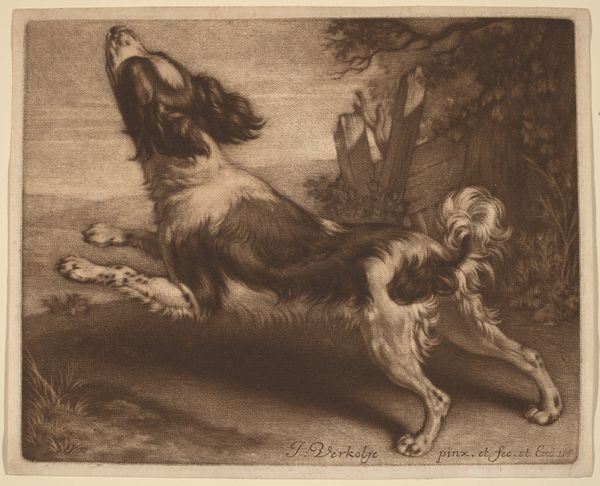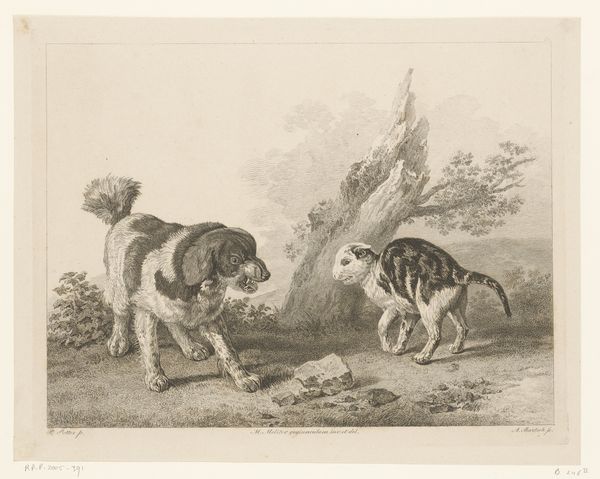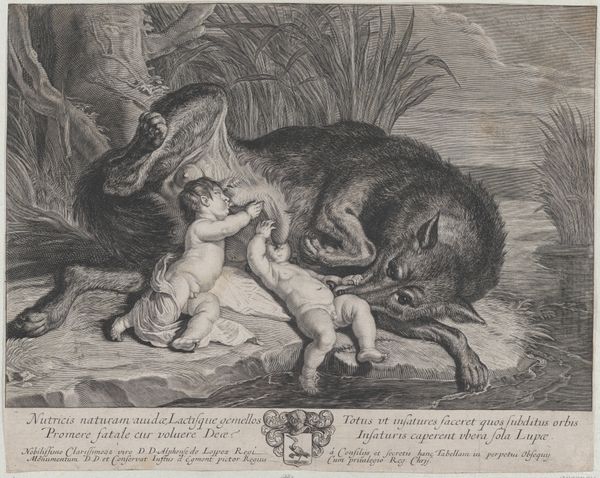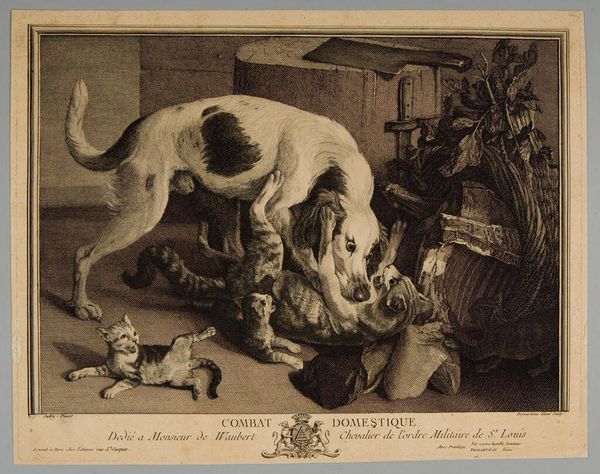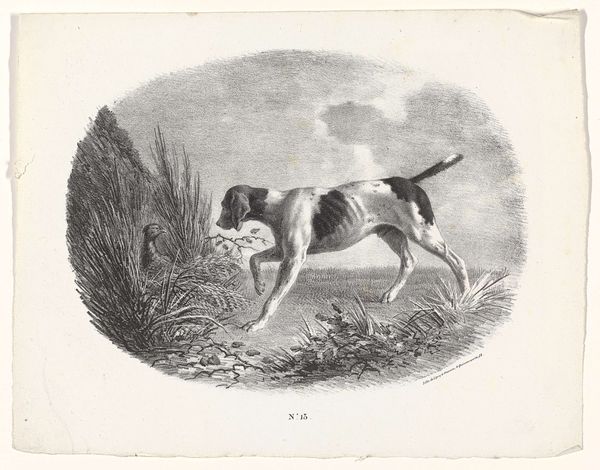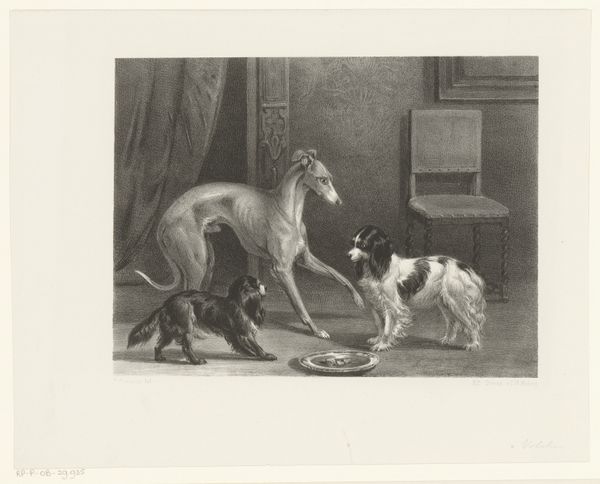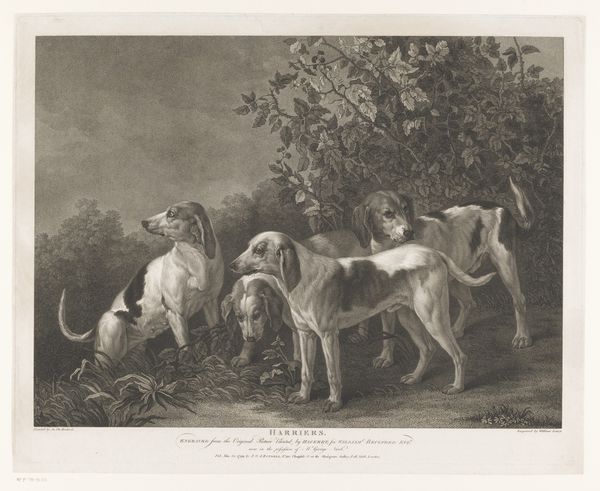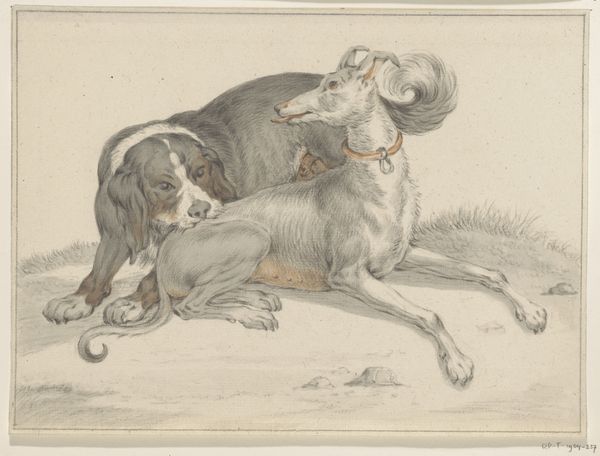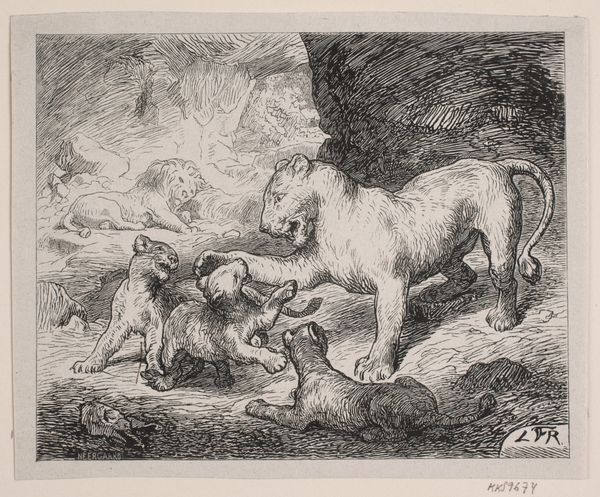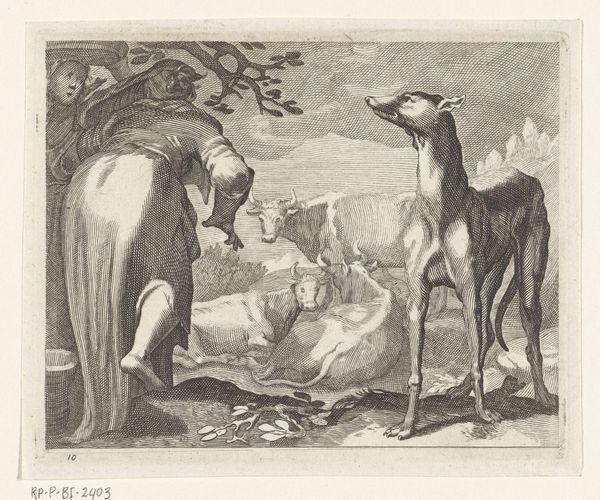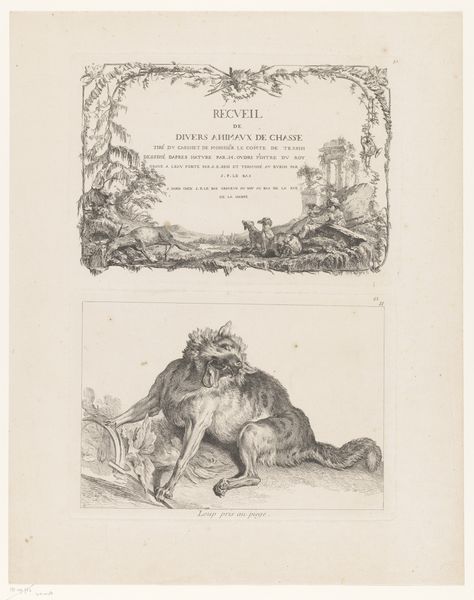
Dimensions: Sheet (trimmed): 8 11/16 × 9 15/16 in. (22 × 25.3 cm)
Copyright: Public Domain
Curator: This engraving, known as "Dogs and Still Life," created by Pierre Charles Canot in 1778, presents a seemingly commonplace scene. Editor: My first impression is that it is far from "commonplace"—there is a quiet tension, a subtle but undeniable atmosphere of privilege and control embedded in what might appear as a typical Baroque depiction of animals. Curator: Indeed. Canot executed this work as an engraving, likely intended for wide distribution as part of a larger series. Let’s consider how gender, class, and politics intersect within such imagery of the late 18th century. The dead game hung behind the animals immediately positions humans within a role of domination over nature. Editor: Yes, the presence of death looms heavily here. The cat guards the lifeless bird in its paws, while a dead animal hangs on display. Notice the interplay between domesticated animals and prey animals – the composition becomes a visual reminder of survival, predator and victim existing side by side. And this drama is presented in what the engraving tells us is a "dressing room," domesticating this tension. Curator: Exactly. The composition, with its stark contrasts and emphasis on texture, echoes a larger social order where such leisure and ownership were markers of affluence. Consider, also, the cultural perception of hunting and its relationship to masculinity and social standing during this period. The animal is objectified, and then put on display for the sake of luxury and enjoyment. Editor: The dogs are in postures suggestive of alert and watchfulness. It suggests, perhaps, guarding one’s domain and enforcing societal hierarchies. Each element feels symbolic and intentional – a reflection of more than just the natural world. Curator: And consider the implications of a genre painting that idealizes a particular lifestyle during a period of massive inequality. Such representations contribute to solidifying and normalizing existing social hierarchies. Editor: Looking at the print this way gives a fuller picture of a privileged class in their physical environments. Curator: This reminds us that art doesn't exist in a vacuum; rather, it reflects and reinforces specific power structures. Editor: Absolutely, it's more than a picture—it's a document.
Comments
No comments
Be the first to comment and join the conversation on the ultimate creative platform.
